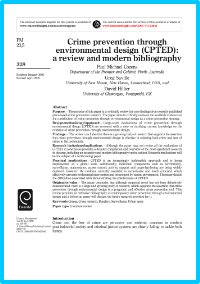By: FERHAT TURA
Problem-oriented policing (POP) is one of the various proactive policing strategies that have been developed since the 1970s. It has been claimed that POP has had a considerable effect in reducing crime (Weisburd et al., 2010). However, its role in the crime drop that has been experienced in England and Wales and across the world since the 1990s (Tseloni et al., 2010) is not yet known (Weisburd and Majmundar, 2018). Therefore, this thesis explores the role of POP in the burglary drop at the police force area (PFA) level in England and Wales between 1988 and 2007/08.
The theories that underpin both POP and this study are opportunity-related theories (rational choice and routine activity theories), social disorganisation theory, and the new public management concept. The empirical component of the study is divided into three phases, where each phase employs different methods (e.g. multilevel negative binomial regression) to analyse a rich array of data sources (e.g. the Crime Survey for England and Wales). The results of this thesis can be summarised as follows:
1. A number of police forces in England and Wales were consistently committed to POP over time.
2. There seemed to be a relationship between POP and the fall in burglaries and repeat burglaries in a number of POP-committed PFAs between 1995 and 2007/08.
3. Although POP-committed police forces experienced fewer burglaries in 2003/04, POP did not result in a statistically significant reduction in burglaries between 1995 and 2003/04.
4. Conversely, POP-committed police forces saw a statistically significantly higher number of burglaries in 1997.
5. Police forces with a higher number of police officers per 1000 residents experienced a statistically significant reduction in burglaries in 2003/04.
In light of the above findings, this thesis sheds new light on the crime drop and policing literature. Consequently, the findings inform the theoretical and practical aspects of POP that can be used by police and other crime prevention agencies to reduce burglary victimisation.
Notttingham Trent University; November 2019










